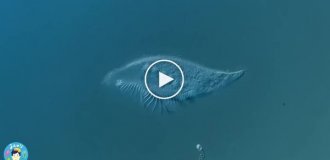Achatina: Pet Snails Are Destroying the World (11 photos)
What happens if a prolific animal from a warm, humid climate is transported to another continent and resettled in a region with a warm, humid climate? That's right: sooner or later, it will escape its confinement and begin wreaking havoc on local ecosystems. Everyone seems to know this, yet humanity continues to make the same mistakes time and time again. 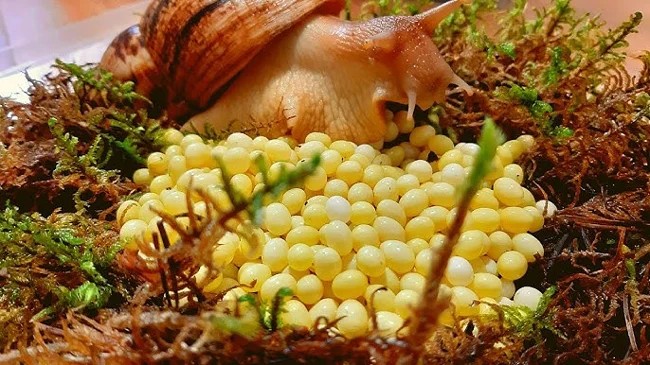
And in the case of the giant Achatina, we've stepped on the rake so dramatically that they're now among the hundred most dangerous invasive species on the planet, and in the US, even possessing their eggs can be a criminal offense! 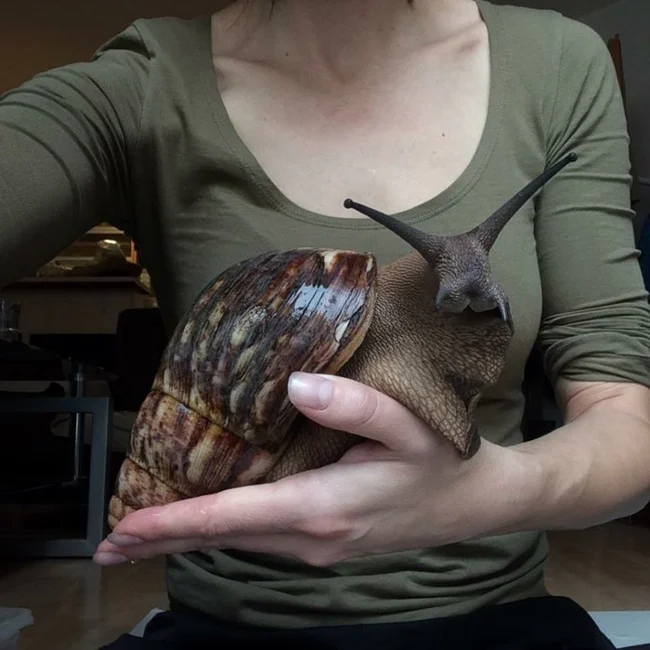
No, it's not a hare. But it eats greens just as well.
Scientists described the Achatina in 1821, and even then, humanity was several steps behind mollusks. By the time the species was described, the snail invasion had already been underway for over 20 years! By 1821, the giant Achatina had left the east coast of South Africa and landed on Madagascar and nearby tropical islands. All scientists could do was assess their ability to feed on almost any vegetation, incredible ecological flexibility, and ability to enter suspended animation for up to 3 years! 
By the way, in the Achatina's homeland, in East and South Africa, they are easily collected and eaten. Of course, almost a kilogram of fresh meat is crawling along the ground.
After all, this was the harsh 19th century, when science was the preserve of enthusiasts, and ordinary people didn't care about the environment. Therefore, the snail spread across the planet without encountering any resistance. Along with food shipments, it first penetrated Southeast Asia and China, and then managed to overcome the Great Natural Barrier—the Sahara Desert. But this only worried the farmers whose crops it destroyed, and the doctors increasingly confronted with new diseases of unknown origin. 
And the giants eat more than just grass. In pursuit of minerals to build their shells, the mollusks chew up stone structures.
One such person was Albert Mead, a parasitologist and lieutenant in the American Army. During World War II, he served in a unit combating parasitic infections. Even then, Albert noticed the large number of cases of angiostrongylosis—meningitis caused by roundworms. After the war, he discovered that giant Achatina snails were the carriers of these parasites. He then decided to study them and spent 60 (!) years of his life on it. 
Albert Mead and his protégés.
In 1961, Albert Mead published a comprehensive and extremely detailed monograph devoted to Achatina snails and their danger to humans and the economy. In it, he compiled all known information about the snails and finally revealed the main secret of their furious invasiveness. He discovered that the invaders are distinguished not only by their high ecological flexibility and fecundity (they are capable of laying 1,200 eggs per year), but also by their indifferent attitude toward sex. Even a single Achatina is enough to establish a stable population, as each individual is a hermaphrodite capable of self-fertilization. 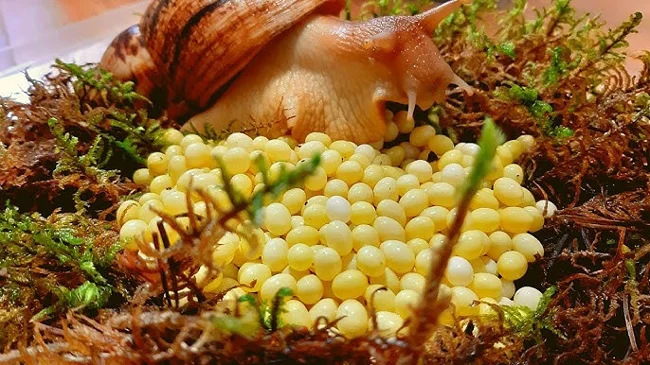
Each Achatina lays 200-300 very aesthetically pleasing eggs 5-6 times per year.
Mead's publications attracted considerable attention to the giant Achatina, which initially even worsened the situation. Achatina snails quickly became popular pets and inhabitants of nature corners in American schools. Who in their right mind would refuse an exotic, palm-sized snail that costs pennies to maintain? 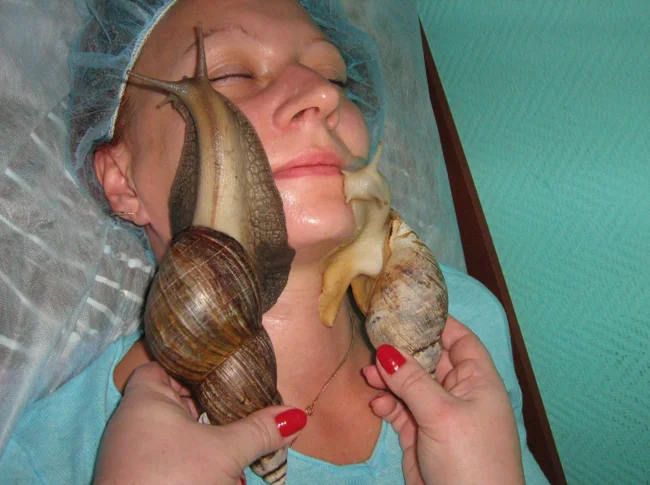
A rather strange cosmetic procedure still exists. The theory is that Achatina snails exfoliate the face, a kind of peeling. In reality, they can actually cause some kind of infection.
And, as befits any invasive species, Achatina snails quickly escaped. But thanks to consultations with a leading Achatina expert, Americans will be able to nip the infestation in the bud. After which, the government did what should have been done long ago – it imposed a complete ban on the import of Achatina snails and their eggs under penalty of criminal liability. But the rest of the world couldn't defend itself. 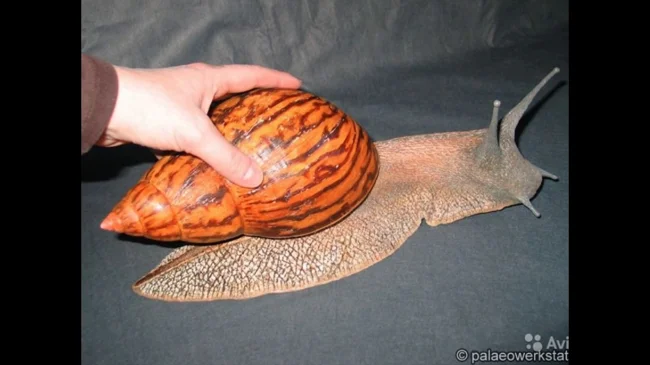
Harrowing footage of an Achatina snail escaping from captivity.
In the following decades, Mead watched helplessly as Achatina scaly-sided bats took over hundreds of tropical islands, increased their influence in Asia, and slowly but surely colonized Argentina with invertebrates. 
Achatina scaly-sided bats can only harm the environment in regions where winter temperatures drop below freezing for at least a week each year. Therefore, keeping them is not prohibited in our country.
Albert Raymond Mead died in the early spring of 2009, next to his loving wife of 67 years. He left this world with the knowledge that he might not have saved the planet from yet another disaster, but at least he had shown humanity the way and protected his country. 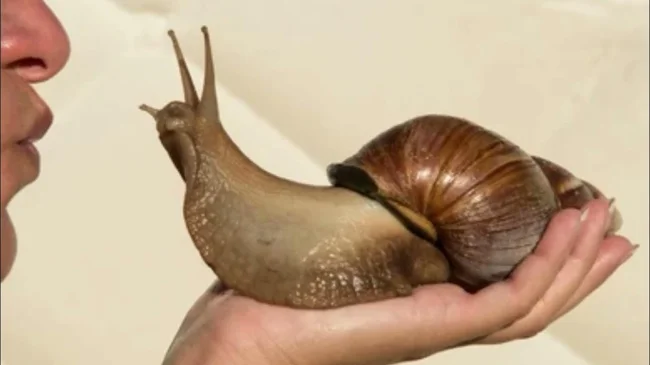
Even if you somehow checked your snail for parasites, you shouldn't kiss it...
He didn't see Argentina shut down its snail eradication programs and admit complete defeat. He didn't learn that in 2011, the snails had re-emerged in the United States, and this time they couldn't be quickly driven off the continent. As of this writing, three areas of Florida are still under quarantine, and the US government is investing heavily to at least keep them out. But no eradication method has yet proven sufficiently effective. 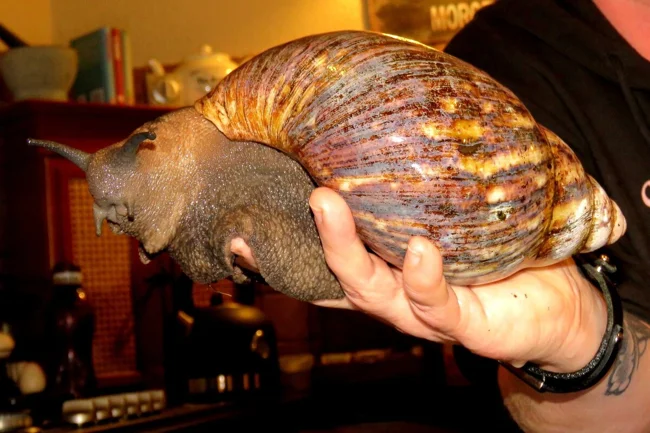
The bun's been sitting around a bit...








